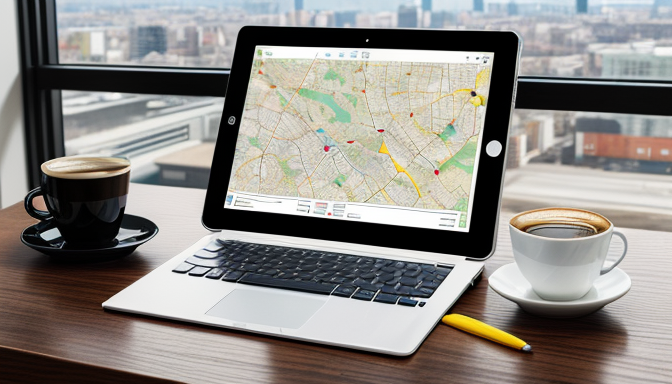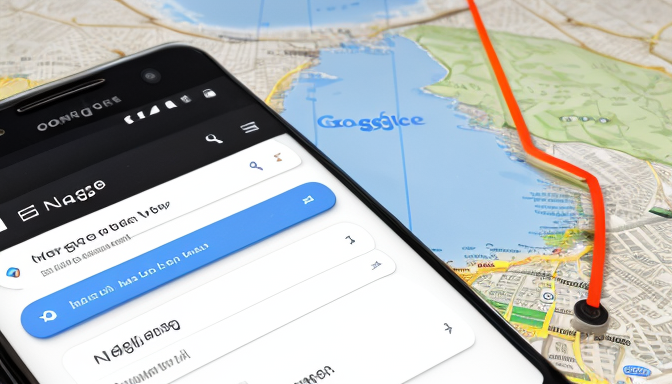
Google Maps Data
Maps Data, Have you ever thought about how maps data can change the way we see the world? It’s not just about finding directions. In fact, using maps data for insights can be a game changer in many fields. Whether you’re in business, education, or even urban planning, understanding geographical data can provide you with a new lens to view challenges and opportunities.
Imagine you’re a business owner. You want to know where to open your next store. Instead of guessing, you can analyze maps data to see where your customers live. This way, you can make informed decisions. You can identify hotspots of activity, understand traffic patterns, and even see demographic information. It’s like having a crystal ball that shows you the best places to invest your resources.
Moreover, maps data can help in enhancing strategies. When you combine traditional data with geographical insights, you can create a more holistic view of your market. For example, consider a restaurant chain. By analyzing maps data, they can see which areas have a high concentration of potential customers. They can also learn about local competition and even seasonal trends. This information is invaluable for crafting marketing strategies that resonate with local tastes and preferences.
But it doesn’t stop there. Using maps data for insights can also improve operational efficiency. Think about logistics. Companies rely on maps to optimize delivery routes. By analyzing traffic patterns and road conditions, they can save time and reduce costs. This not only benefits the company but also enhances customer satisfaction by ensuring timely deliveries.
In addition, staying ahead of trends is crucial in today’s fast-paced world. As we explore how to use maps data for insights, it’s essential to keep an eye on emerging trends in data usage. For instance, more businesses are integrating maps data with artificial intelligence. This combination can lead to predictive analytics, allowing companies to foresee changes in consumer behavior. Isn’t that exciting?
In conclusion, leveraging maps data for insights is not just about collecting information; it’s about transforming that information into actionable strategies. Whether you’re looking to enhance customer engagement, improve operational efficiency, or stay ahead of the competition, maps data can be your ally. So, the next time you think about maps, remember: they are more than just lines on paper. They are powerful tools for insight and innovation.

Collect Maps Data for Insights Analysis
Collecting maps data is like gathering pieces of a puzzle. Each piece holds a story, a trend, or a hidden opportunity. But how do you effectively gather this data? First, you need to know where to look. There are various sources out there, each offering unique insights. From government databases to private mapping services, the options are vast.
One effective method is using geospatial technology. This technology allows you to visualize data in a geographical context. Think of it as putting on a pair of glasses that help you see patterns that aren’t obvious at first glance. For example, if you’re a retailer, mapping out customer locations can reveal where to open your next store. It’s all about connecting the dots.
Another key source is publicly available datasets. Many governments and organizations provide free access to maps and geographic data. This data can include anything from population density to traffic patterns. By tapping into these resources, you can gain valuable insights that inform your decisions.
But don’t just stop at collecting data. Analyzing it is where the magic happens. Using software tools, you can overlay different datasets to uncover trends. For instance, by combining weather data with sales data, you might find that certain products sell better during rainy days. This kind of analysis can lead to more informed strategies.
Let’s not forget about the importance of real-time data. In today’s fast-paced world, having the latest information can give you a competitive edge. Tools that provide real-time mapping updates can help you make quicker decisions. Imagine being able to see a sudden influx of customers in a specific area and adjusting your marketing strategy on the fly. That’s the power of real-time maps data.
In summary, collecting maps data for insights analysis is crucial for effective decision-making. By leveraging various sources and technologies, you can uncover trends that lead to better strategies. The more you explore, the clearer the picture becomes. So, get out there and start piecing together your maps data puzzle!

Apply Maps Data for Insights in Strategies
In today’s fast-paced world, using maps data is more than just a trend; it’s a necessity. Imagine trying to navigate a new city without a map. Confusing, right? The same goes for businesses. Without geographical insights, making informed decisions can feel like wandering in the dark. By integrating maps data into your strategies, you can shine a light on opportunities and challenges.
So, how does this work? First, think about the geographical context of your business. Are you targeting specific regions? Understanding the demographics and behaviors of people in those areas can drastically change your approach. For instance, if you’re launching a new product, analyzing maps data can reveal where your target audience lives, their shopping habits, and even local trends. This information is gold!
Moreover, maps data can enhance operational efficiency. Let’s say you run a delivery service. By utilizing maps data, you can optimize routes to save time and fuel. This not only cuts costs but also improves customer satisfaction. Nobody likes waiting for a package that seems lost in transit. With the right data, you can ensure timely deliveries, keeping your customers happy and returning for more.
Another vital aspect to consider is customer engagement. When you apply maps data effectively, you can create personalized marketing strategies. For example, if a particular area shows a high interest in outdoor activities, you could tailor your advertising campaigns to reflect that. Maybe you offer discounts on camping gear or engage in local sponsorships. This localized approach makes your brand feel more connected to the community, which is always a plus.
To illustrate, here’s a quick table showing how maps data can impact different business strategies:
| Business Area | Maps Data Application | Potential Outcome |
|---|---|---|
| Marketing | Targeting ads based on location | Increased engagement and sales |
| Logistics | Optimizing delivery routes | Reduced costs and faster delivery |
| Product Development | Identifying regional preferences | Better product fit and customer satisfaction |
In conclusion, applying maps data for insights in your strategies is not just beneficial; it’s essential. By understanding your geographical landscape, you can make smarter decisions that lead to improved efficiency and stronger customer connections. So, don’t just sit back and let opportunities pass by. Embrace the power of maps data and watch your strategies transform. Remember, in the world of business, knowledge is power, and maps data is a key part of that knowledge.

Follow Maps Data for Insights Trends
In today’s fast-paced world, staying updated on the latest trends in maps data usage is not just an option; it’s a necessity. Why? Because the insights you gain can make the difference between leading the pack and trailing behind. Think of maps data as your compass in a vast ocean of information. Without it, you might just drift aimlessly. But with the right data, you can navigate towards success.
First off, let’s talk about the sheer volume of data available. Every day, millions of users generate maps data. From GPS navigation to social media check-ins, this information is a goldmine for businesses. By analyzing this data, companies can uncover patterns and trends that were previously hidden. Imagine being able to predict where your customers will be before they even know it themselves. Sounds like magic, right? But it’s all about using maps data effectively.
Moreover, the integration of real-time data analytics has transformed how organizations perceive maps data. Companies are leveraging advanced tools to analyze geographical trends, customer behaviors, and even environmental changes. This real-time insight allows businesses to adapt quickly. For instance, a retail store can identify which products are popular in specific areas and adjust their inventory accordingly. This is how maps data can drive operational efficiency.
But it doesn’t stop there. The trends in maps data are constantly evolving. Here are a few key trends to keep an eye on:
- Geospatial AI: Combining artificial intelligence with maps data is becoming more common. This allows for deeper insights and predictive analytics.
- Mobile Mapping: With the rise of smartphones, mobile mapping applications are providing businesses with location-based insights like never before.
- Augmented Reality (AR): AR is changing how we interact with maps data, offering immersive experiences that can enhance customer engagement.
As you can see, the landscape is changing rapidly. Staying updated is crucial. By following these trends, you can ensure that your organization remains competitive in a data-driven world. It’s like surfing; you have to catch the right wave at the right time. Otherwise, you risk getting wiped out.
In conclusion, the importance of following maps data for insights trends cannot be overstated. It’s about more than just data; it’s about understanding your customers and making informed decisions. So, keep your eyes peeled and your strategies agile. The world of maps data is waiting, and it has a lot to offer!
Frequently Asked Questions
- What is maps data and why is it important?Maps data refers to the geographical information that helps visualize and analyze spatial relationships. It’s crucial because it provides context to data, enabling better decision-making in various fields, from urban planning to marketing strategies.
- How can I collect maps data effectively?Collecting maps data can be done through various methods such as using GIS software, satellite imagery, or even open-source mapping tools. The key is to identify your specific needs and choose the tools that best fit your objectives.
- In what ways can maps data enhance my business strategy?Integrating maps data into your business strategy can improve operational efficiency by pinpointing customer locations, optimizing delivery routes, and identifying market trends. It’s like having a treasure map that leads you straight to your customers!
- What are the latest trends in maps data usage?Current trends include the rise of real-time data analysis, the use of AI for predictive mapping, and enhanced mobile mapping technologies. Staying updated with these trends helps businesses innovate and stay competitive in a rapidly evolving landscape.
- Can small businesses benefit from using maps data?Absolutely! Small businesses can leverage maps data to identify local market opportunities, understand customer demographics, and even target specific neighborhoods for marketing campaigns. It’s a game changer!



